Goals were up last season, and offensive production stood out more than in recent seasons. In the 2021-22 season, 18 of the 32 teams averaged over 3.00 goals per game, a big jump from 12 in the 2020-21 season and the most since the 1993-94 season, which had 20 of the 26 teams averaging over 3.00 goals per game. Additionally, the Florida Panthers (4.11 goals per game) were the first team since the 1995-96 Pittsburgh Penguins (4.41 goals per game) to average over 4.00 goals per game in a season.
Related: Good Defense Will Defeat Good Offense in the NHL Playoffs
The scoring surge of this past season could be seen as an anomaly, with many external factors playing a role in the increased offensive production. Most notably, the constant pauses in the season with the COVID-19 pandemic affected the league and, specifically, prevented goaltenders and defenses from establishing a rhythm. However, goals have been trending upward for a few seasons now, and along with the high-scoring playoff matchups, there’s more than enough evidence to say that offense will continue to dominate the NHL.
Furthermore, the league is more skilled at the forward position than ever before, with Connor McDavid, Auston Matthews, and Nathan MacKinnon among the skaters who impress on a nightly basis. Likewise, there has been an offensive emphasis for skaters, even at the defense position, making prospects that join the league more prepared to find the back of the net than in previous eras.

However, despite the increased scoring, defenses are fighting back and adjusting to the faster and more skilled game. In the chess match between offensive and defensive systems, both in the front office and coaching staff, teams are figuring out how to counteract the best offenses in the game. This was most noticeable in the Stanley Cup Playoffs, with the teams advancing providing a blueprint for how to eliminate speed and how to limit even the league’s best offenses. So, what are some of the ways the league is responding to the scoring surge?
Part One – Goaltending & Defensive Chemistry
The first factor is the last line of defense, the goaltender. Specifically, how goaltenders and defenses can and will play off one another.
Vasilevskiy & The Lightning Defense
The Tampa Bay Lightning are the model NHL franchise, winning back-to-back Stanley Cup titles in 2020 and 2021 and appearing in the Final last season. They are the team to emulate, especially in how they eliminate even the best offenses. This was highlighted by their sweep of the Presidents’ Trophy-winning Panthers, who only scored three goals in the four-game 2022 Second Round series.
What stands out is how the Lightning tailor their defense to their goaltender and his skills. Andrei Vasilevskiy is one of the bigger, more athletic goaltenders in the game who thrives on saving the initial shot. As a result, the defensemen tend to crowd the middle of their zone, which subsequently limits shooting lanes and effective shots on goal, with opponents being forced to take shots from difficult angles. It also allows Vasilevskiy to make the initial save with cross-ice passes becoming a tough ask with multiple Lightning skaters in the passing lane. Additionally, with multiple skaters in the middle of the zone and the slot, the second chance shots are nonexistent, with the defensemen cleaning up the pucks near the crease and limiting scoring chances.
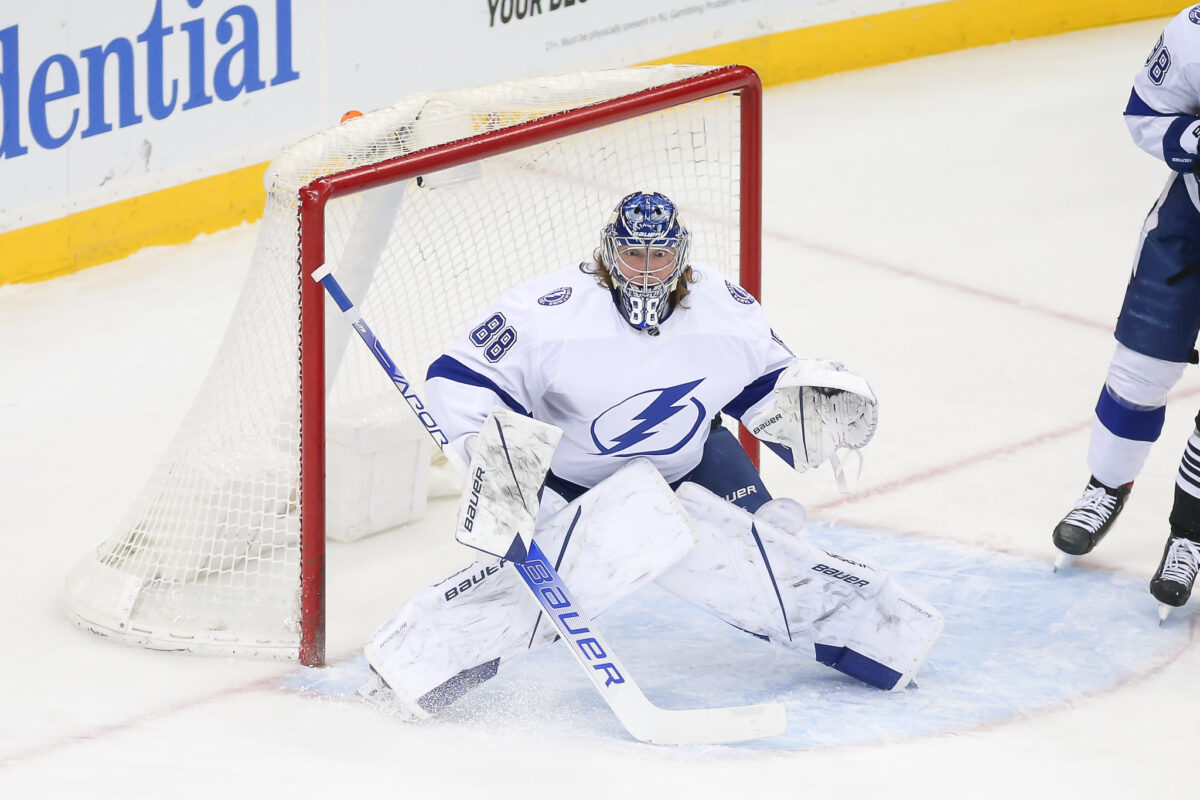
Granted, not many teams have a world-class goaltender like Vasilevskiy who can put a team on his back and lead them to a Cup title. However, the Lightning have showcased that a team that knows their goaltender can play a certain style of defense to benefit his skill set. Vasilevskiy’s one weakness is when he is on the move or out of position, and the defensive unit has essentially eliminated those situations from the game by playing more condensed in their zone.
The Lightning aren’t the outlier. Throughout the league, coaches are building their defense with their goaltenders in mind. This has also been prominent with the Winnipeg Jets, albeit with mixed results.
Hellebuyck & The Aggressive Jets Defense
There is no team in the NHL that appears more confident in their goaltender than the Jets. Connor Hellebuyck works more than any starter in the league. He has faced more shots (leading the league in shots against in each of the last four seasons), started more games (leading the league in three of the last five seasons), faces more on-ice pressure, and has to make more saves than any other goaltender.
This isn’t by accident. The Jets know they have one of the best goaltenders in the league and, like Vasilevskiy, one of the more athletic netminders. Aside from relying on him more than most teams would, the team also plays a more aggressive style of defense. The skaters are willing to step up at the blue line and attack opponents on the rush rather than cut off angles to the net, knowing that if they make a mistake, Hellebuyck will be there to bail them out.
This strategy is the most direct in attacking the best forwards and particularly the best skaters in the game. While there will be mistakes along the way, the reward is halting speed in the neutral zone before it can cost the team. In the First Round of the 2021 Stanley Cup Playoffs, the strategy paid off tenfold as the Jets swept the Edmonton Oilers and limited both McDavid and Leon Draisaitl from beating them on the rush and with their speed. Likewise, the Jets’ success in the previous seasons, where they reached the Western Conference Final in 2018, could be attributed largely to their great goaltender and the aggressive defense that played off him.
The aggressive defense eventually backfired this season, as the Jets missed the playoffs, and Hellebuyck wasn’t the same dominant goaltender. As a result, it’s possible that under a new head coach in Rick Bowness, the team will both lighten the workload for their starter but also play more disciplined and conservative defense. While it’s unclear what direction the Jets will head in defensively, they experienced success with their defense playing off their goaltender.
Rangers-Hurricanes Second Round Matchup
The New York Rangers and Caroline Hurricanes finished the regular season with the two best defenses in the league, allowing under 2.50 goals per game. When the two teams met in the Second Round of the Stanley Cup Playoffs, it was the epitome of defensive performance, with only 33 goals scored in the seven-game series and only 18 goals scored in the first five games.
The series notably displayed how good and even great goaltenders can feed off great defenses and vice versa. Both teams battled for possession and offensive zone time but also built their defenses with the opposing offenses in mind to help out their goaltenders.
The Hurricanes played the series without their starter Frederik Andersen, but Antti Raanta stepped up largely with the defense limiting shots altogether. Jaccob Slavin, Brett Pesce, and Brady Skjei are some of the best defensive players in the game, and they limited how often the Rangers found scoring chances on the rush, cutting off angles to the net but also playing directly in the path of the shooting lanes. Essentially, they dared the Rangers to work for their shots and make the extra passes to find scoring chances instead of allowing Artemi Panarin or Mika Zibanejad to outskate them to create quick shots. Ultimately, Raanta only faced 157 shots in seven games, which both helped him and the team win three games in the series.
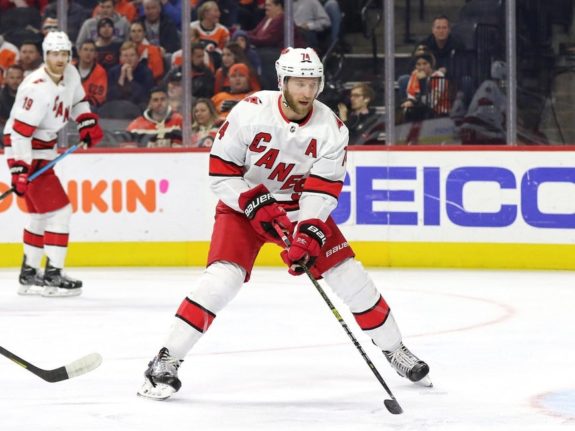
The Rangers, on the other hand, didn’t have to worry about their goaltender, Igor Shesterkin, who won the Vezina Trophy last season. Instead, their issue was combatting the Hurricanes’ speed and uncanny ability to score off cross-ice passes. It meant that their best skating defensemen, Adam Fox and Ryan Lindgren, had to be back in the defensive zone on the rush and in position to both defend the passes and the one-timer shots but, more importantly, slow the game down. As the series progressed, the defensive unit continued to both slow the game down and force the Hurricanes to develop an attack solely in the offensive zone where they would have to beat a settled-in Shesterkin at his best.
Part Two – Makar & Speed Skating Defensemen
A theme that we are seeing from teams across the league is that the best defense is a great offense. Moreover, the type of players that teams are looking for to defend the McDavid’s of the game need to be faster and better skaters to keep up with them. A question that executives might ask themselves is what type of player should be developed to defend the skilled forwards in today’s game? Based on the playoffs, specifically the Western Conference Final, they might have an answer.
Makar’s Remarkable Season
The 23-year-old Cale Makar had a career year and arguably one of the best for any defenseman in NHL history. In the 2021-22 season, Makar won the Norris Trophy as the league’s top defenseman, helped the Colorado Avalanche win the Stanley Cup, and also was awarded the Conn Smythe Trophy for his outstanding play in the playoffs.
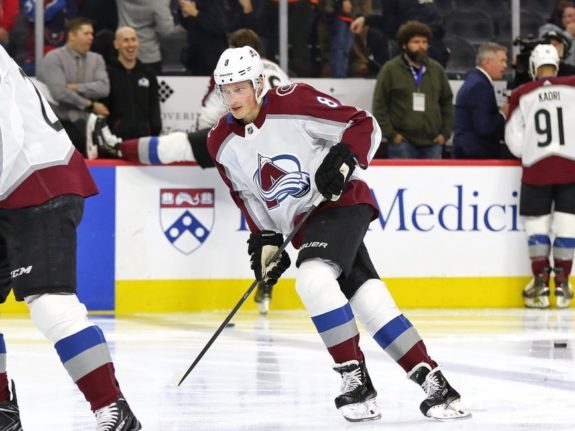
In his best moments, the moments where everyone saw his greatness in the Avalanche playoff run, Makar was a force in the offensive zone, scoring eight goals and 21 assists but also forced turnovers and instantly turned defense into instant offense. This was most prominent against the Oilers and their fast-paced offense, which wasn’t limited but countered perfectly in the four-game sweep of the 2022 Western Conference Final. The Oilers scored 13 goals in the short series, but the Avalanche, led by Makar and Devon Toews, countered their rushes by forcing turnovers and setting up the offense against a team out of position. The resistance allowed them to average six goals per game in the series and outscore their opponent 24-13.
The ideal defenseman to stop the star forwards of today is a Makar — a great skater who not only limits the opponent but fuels the offense as well. It’s a contrast from what an ideal defenseman looked like in the previous generation, with bigger-bodied players like Zdeno Chara, Dustin Byfuglien, and Scott Stevens removing opponents from the puck and imposing their will. However, the two-way players, particularly the ones who can skate with the best scorers, have taken the league by storm.
How Hedman Helped the Lightning Win the Cup
Victor Hedman became the player that fueled the back-to-back titles for the Lightning. In the bubble in the 2020 Stanley Cup Playoffs, he was an integral part of their success in all three zones and gave the team a significant edge. When the offense needed a spark, Hedman stepped up as a playmaker from the point, with his 10 goals and 12 assists, propelling the team to a championship and himself to the Conn Smythe Trophy.
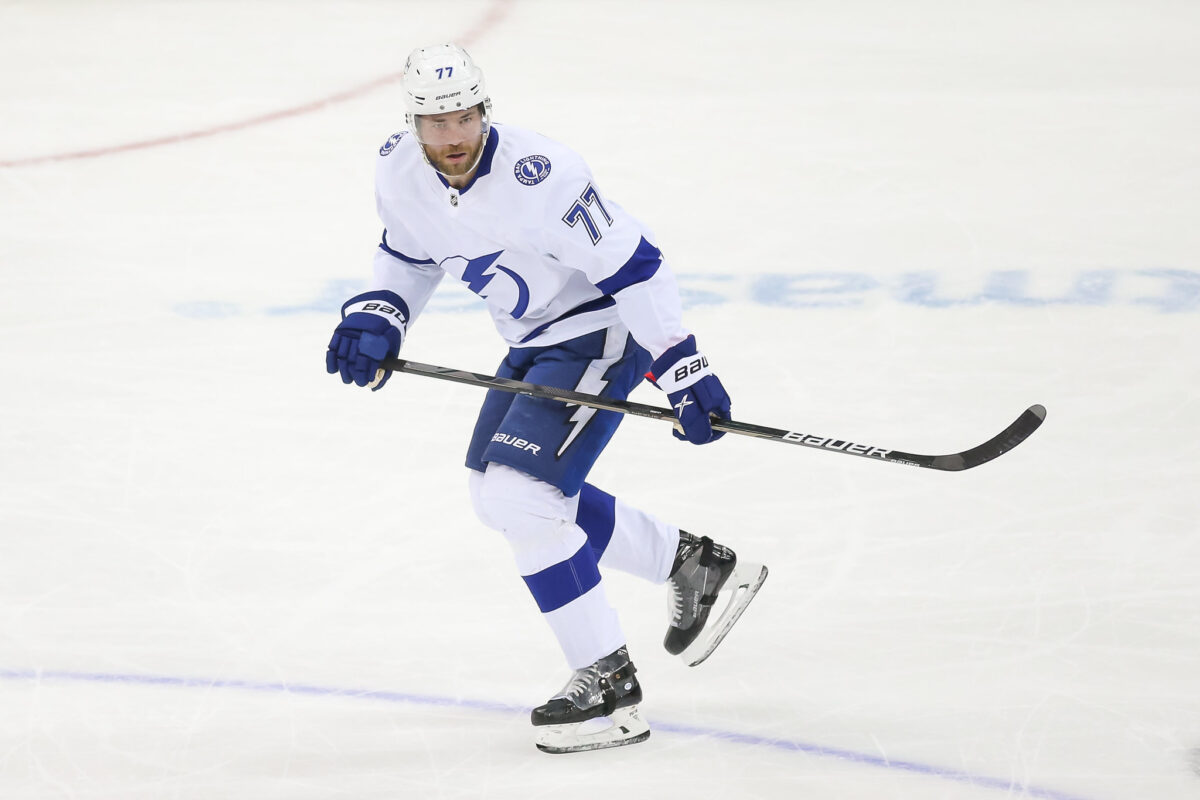
His offensive play stood out for many, but his play on the defensive end of the ice was the difference-maker in the Cup run. As opposing teams tried to beat them on the rush, he would cut off angles to the net and break up scoring chances, oftentimes skating back on the play to catch up with the player with the puck. Even when the opposition would have an odd-man rush, with a numbers advantage, Hedman would play his position in a disciplined but also athletic manner.
Disciplined defensemen will always be crucial to a team’s success as they make the difference. In today’s game, it’s also important to have great skating defensemen to get to the right spots and cut off angles to the net, especially following a turnover. Hedman, along with 2019-20 Norris Trophy-winning Roman Josi, bridged the gap from the defensemen of the previous era to a new age of blueliners who are impacting the modern game.
Fox, McAvoy & Other Young Defensemen
The new wave of young and talented defensemen are here and, most importantly, are developed to stop the fast-paced offenses. Adam Fox, Charlie McAvoy, Mikhail Sergachev, and Miro Heiskanen are among the many defensemen 25 years old or younger who can both skate with the best forwards in the game and, like Makar, can turn defense into instant offense. Aside from defensive discipline, the willingness to block shots, and the strong instincts to force turnovers, it’s essential to be a great puck-handler, skater, passer, and visionary with the puck to reach the NHL.
In the 2020-21 season, the 22-year-old Fox won the Norris Trophy after his big year with the Rangers, showcasing the new-age NHL defenseman. His remarkable season particularly displayed the importance of a two-way skater but also the ability to effectively start up the offense with quick passes to catch the opponent off guard and create scoring opportunities. His passing led to 42 assists, a league-high among defensemen, and along with his other skills, helped improve the team on both ends of the ice.

The future of the position might take a step further. After all, Owen Power is another two-way defenseman who is an elite skater but in a bigger body at 6-foot-6 and 215 pounds. Defensemen might become bigger skaters in addition to faster players but based on how the game has changed, speed will remain essential to the position moving forward.
Part Three – Defensive Centers
Along a similar theme, two-way players carry significant weight on any competitive roster. Oftentimes, a great checking line or a defensive forward can provide the opposition with a difficult shift and take over a game. In recent years, nobody has done a better job of elevating the defense from the forward position than Patrice Bergeron.
Bergeron’s Value to the Bruins
The Boston Bruins might not be a model franchise, but they certainly have been one of the more successful ones over the past decade. Their success can be attributed to elite scoring from forwards Brad Marchand and David Pastrnak, a reliable top defenseman from Chara to Torey Krug to McAvoy, or stability in the net from Tim Thomas, Tuukka Rask, or the young Jeremy Swayman. However, the constant throughout has been the top-line center and captain, Bergeron, who will return to the roster on a one-year deal.
Bergeron is an elite scorer, with 400 goals and 582 assists in his 18-year career with the Bruins, but he has compensated for many weaknesses on the roster, specifically on the defensive end. He has added strong play up the middle to create turnovers with the forecheck and the backcheck but also limits opponents from developing plays in the neutral zone. Even in the twilight of his career, Bergeron provides a perfect resistance to the modern offense, centering the top line and often facing the opposing team’s best skaters and succeeding.
The Bruins’ defensive unit has gone through peaks and valleys in recent years, especially once the front office opted for a younger core and let Chara and Krug leave in the 2020 free agency. Bergeron playing at a Selke Trophy level every season and taking home the award five times in his career has both kept the team sound defensively and made them competitive Cup contenders. The recent Stanley Cup Final run in 2019 was particularly fueled by the team’s ability to eliminate the best forwards in the game, from Panarin and the Columbus Blue Jackets in the Second Round to Sebastian Aho and the Hurricanes’ young skaters in the Eastern Conference Final sweep. In each round, Bergeron was controlling the center of the ice and impacting all three zones, proving the value of a defensive center to a Cup run.
Kadri & Danault Fuel Deep Playoff Runs
A lot went right in the Avalanche’s Stanley Cup run, and a lot of players had their best seasons to help elevate the team. Nazem Kadri had one of his best seasons and played an essential role, particularly as a two-way center. His 28 goals and 59 assists helped the top six offensively, but his play at the center position defensively gave the team an edge against some of the best offenses in the league. Moreover, Kadri’s defensive play and quickness set up the offense and quick rushes to the net, creating crucial goals for the Avalanche.
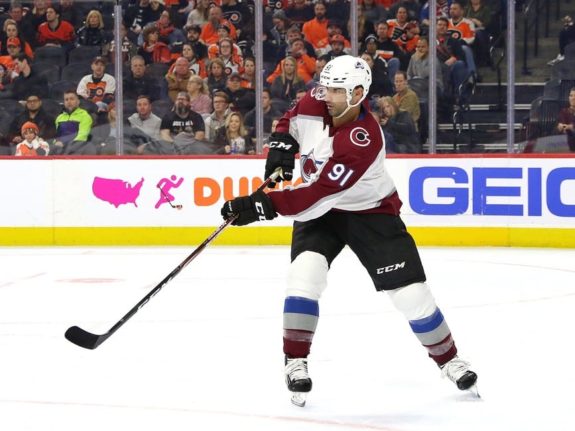
Kadri stood out this season as a two-way center, but over the past two years, Phillip Danault has displayed the importance of a defensive center and how one can compensate for an otherwise weaker roster. The Montreal Canadiens’ 2021 run to the Stanley Cup Final was one of the biggest surprises but one that was possible with a handful of players carrying specific parts of the roster.
Goaltender Carey Price played at a world-class level, while Nick Suzuki and Cole Caufield added a young scoring presence. However, Danault was essential in blunting the Toronto Maple Leafs, Jets, and Vegas Golden Knights’ offense, especially in the center of the defensive zone where opponents tried to find open shots on quick puck movement. He wasn’t a top-line center, but his overall play added depth to the Canadiens, and his defensive play gave the team an advantage.
Further proving his value to a forward unit, Danault signed a six-year contract with the Los Angeles Kings in the 2021 offseason, a move that subsequently impacted the roster he joined and the team he departed from. The Canadiens felt his absence as they struggled last season and finished the regular season with the worst record in the NHL, while the Kings had a big year and reached the playoffs.
Granted, Danault wasn’t the only reason the two teams had the seasons that they did, but he played a major role in improving a team’s defense, noticeably slowing the game down and providing difficulty for speed-based opponents. Against the Oilers in the First Round, he kept McDavid in check in a seven-game series and prevented the league’s top player from overwhelming them with speed. The Oilers won the series, but it was a closer series than many anticipated.
In a similar vein, the New York Islanders and Lightning, two teams that faced each other in back-to-back semifinals in 2020 and 2021, possessed forward depth but, more importantly, defensive forwards in the middle six. The Islanders had Jean-Gabriel Pageau center the third line and control the middle of the ice and add to an already strong defense. They also had a checking line led by Casey Cizikas that particularly countered the Pittsburgh Penguins in the 2019 First Round and the 2021 First Round matchups, with their strong forecheck limiting the speed of the Penguins top line skaters. Likewise, the Lightning had Yanni Gourde, Blake Coleman, and Pat Maroon contribute in all three zones and eliminate any offense they saw, rounding out a great roster.
Great offenses will remain pivotal for teams that are looking to win the Stanley Cup. The problem for a lot of the great offenses, especially ones that win with speed, is when they face good defensive forwards and a center who can control the pace of the game. They can and will slow the game down and limit teams from making plays in the neutral zone or developing an attack and cutting off angles to the net. In a league that is now faster, the two-way players and defensive forwards are becoming more important in resisting great offenses.
Part Four – Possession
One of my collogues at The Hockey Writers, Marko Zlomislic, wrote a piece about advanced hockey analytics and their significance to the modern game. The piece talks about some of the underlying themes behind advanced stats but, more importantly, why they impact today’s game. The metrics often look at the value of where the puck is on the ice (offensive zone, defensive zone, in the slot) and whether a team can successfully move the puck out of their zone and into the offensive zone (zone entries and zone exits). However, one theme that is especially pivotal to a team’s success is possession and where a team possesses the puck.
For teams trying to prevent high-powered offenses, possession has become the most valuable asset, making face-off wins, turnovers, and puck-handling more important. Along the lines that the best defense is a good offense, teams have shifted their focus to players who can tilt the ice in their favor and maintain control of a game. Possession has made Makar the valuable player he is, but it has also made elite forwards like McDavid, MacKinnon, and 2021 Hart Trophy-winning Matthews valuable defensively as they can handle the puck and carry it the full length of the ice. Furthermore, the way prospects are measured and evaluated is by their ability to gain control of the puck and of the game as a result.

With the game becoming increasingly based on speed, defensemen are picking up a lot of attributes that have been formerly associated with the forward position. Puck-handling and playing a full 200-foot game have become the expectation for every player, and the more players a team has on their roster that can play to that level, the better off the team will be. What possession means for the future of hockey is unclear as teams might look for skill over position and players that are jacks-of-all-trades. However, one thing is clear: the game is only going to continue to be more exciting with each adjustment.
